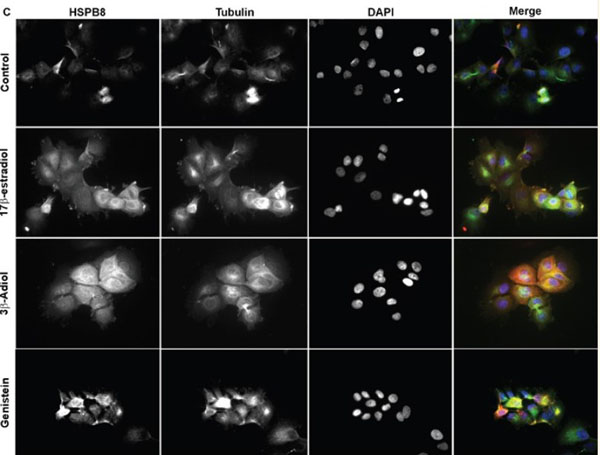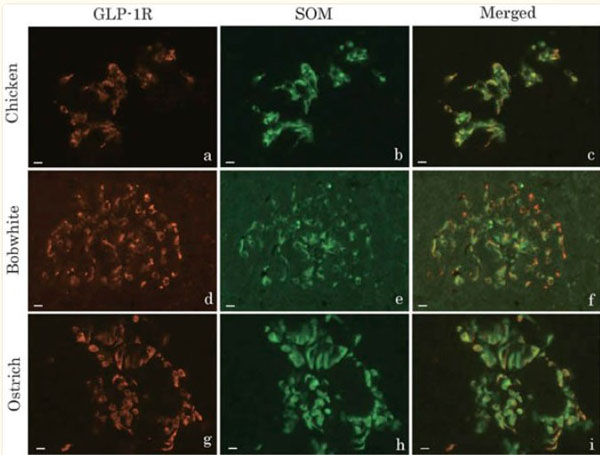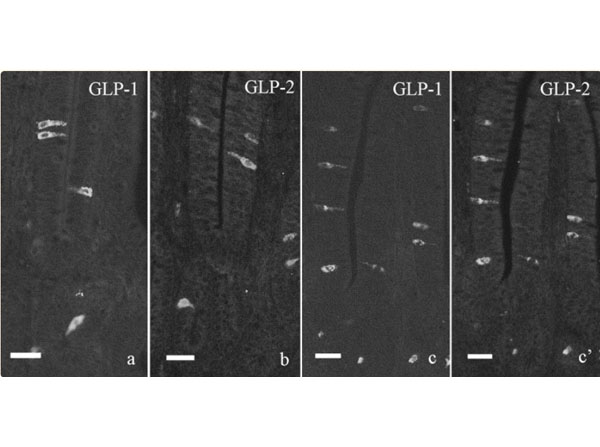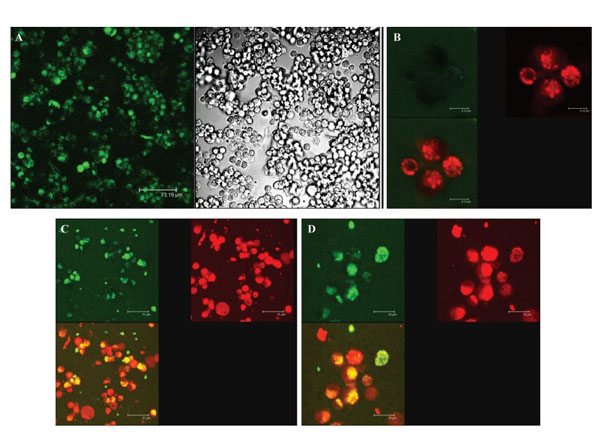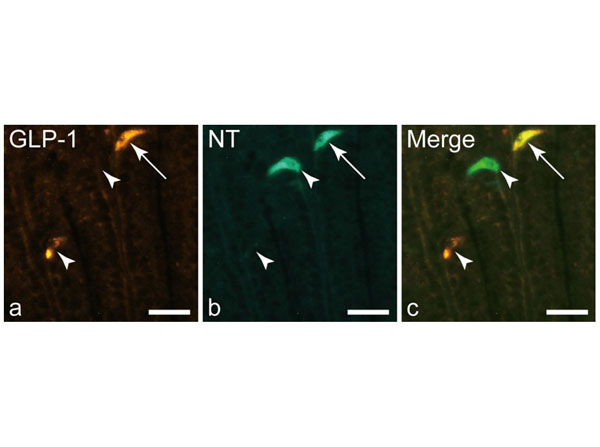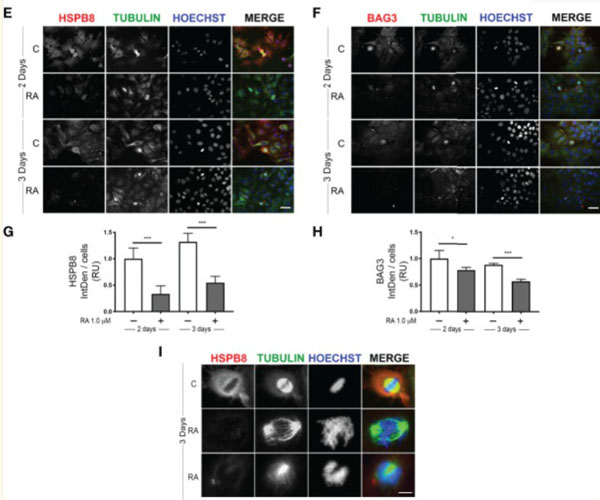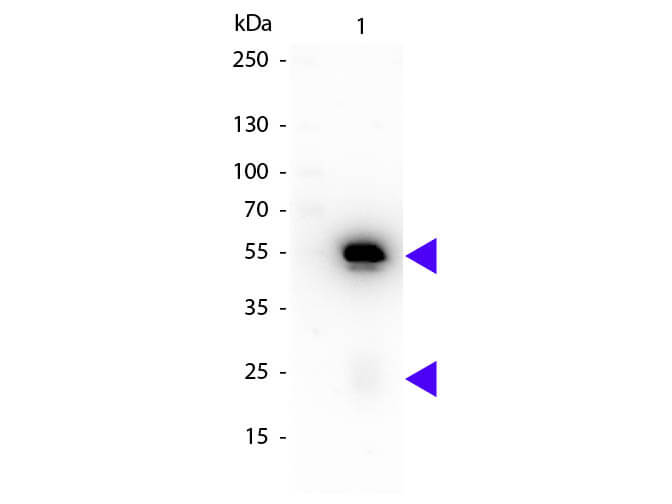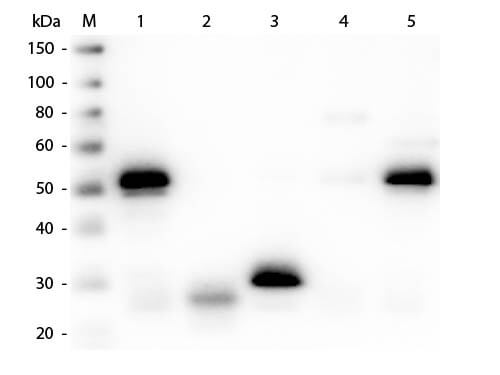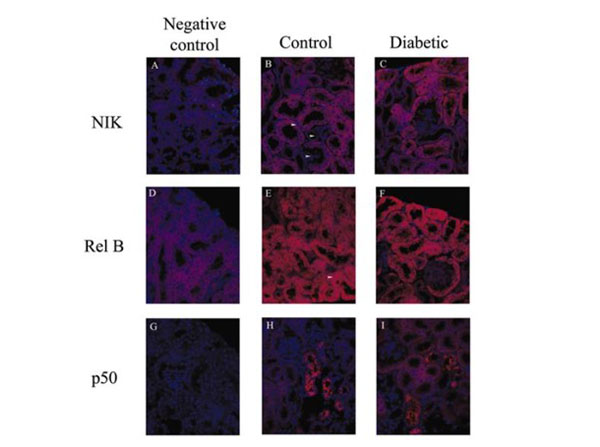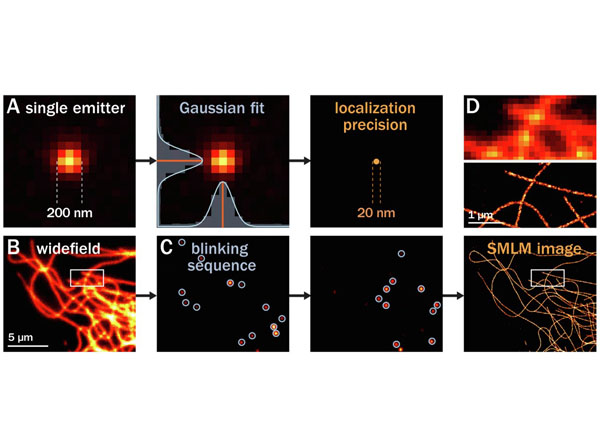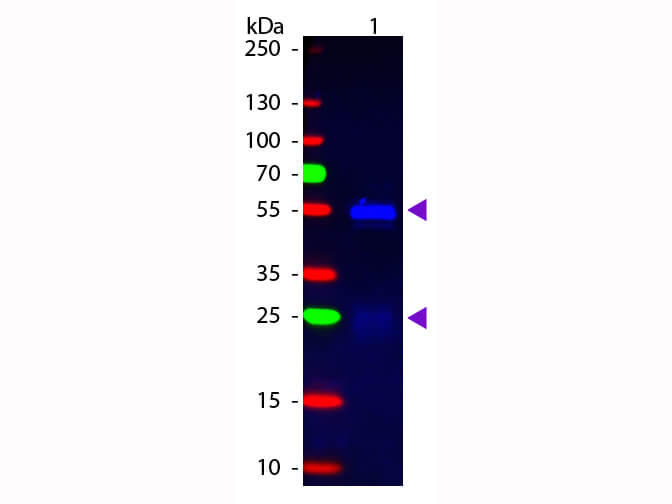Datasheet is currently unavailable. Try again or CONTACT US
Rabbit IgG (H&L) Antibody Rhodamine Conjugated Pre-Adsorbed
Donkey Polyclonal
8 References
611-700-127
1 mg
Lyophilized
IHC, IF, Multiplex
Rabbit
Donkey
Shipping info:
$50.00 to US & $70.00 to Canada for most products. Final costs are calculated at checkout.
Product Details
Donkey Anti-Rabbit IgG (H&L) Antibody Rhodamine Conjugated (Min X Bv Ch Gt GP Ham Hs Hu Ms Rt & Sh Serum Proteins) - 611-700-127
Donkey anti-Rabbit IgG Antibody Rhodamine Conjugation, Donkey anti-Rabbit IgG Rhodamine Conjugated Antibody
Donkey
IgG (H&L)
Rhodamine (TRITC)
Polyclonal
IgG
Target Details
Rabbit
Rabbit IgG whole molecule
This product was prepared from monospecific antiserum by immunoaffinity chromatography using Rabbit IgG coupled to agarose beads followed by solid phase adsorption(s) to remove any unwanted reactivities. Assay by immunoelectrophoresis resulted in a single precipitin arc against anti-Donkey Serum, Rabbit IgG and Rabbit Serum. No reaction was observed against Bovine, Chicken, Goat, Guinea Pig, Hamster, Horse, Human, Mouse, Rat and Sheep Serum Proteins.
Application Details
IF, IHC, Multiplex
- View References
Anti-Rabbit IgG (H&L) Rhodamine Antibody is designed for immunofluorescence microscopy, fluorescence based plate assays (FLISA) and fluorescent western blotting. This product is also suitable for multiplex analysis, including multicolor imaging, utilizing various commercial platforms.
Formulation
1.0 mg/mL by UV absorbance at 280 nm
0.02 M Potassium Phosphate, 0.15 M Sodium Chloride, pH 7.2
0.01% (w/v) Sodium Azide
10 mg/mL Bovine Serum Albumin (BSA) - Immunoglobulin and Protease free
1.0 mL
Restore with deionized water (or equivalent)
Shipping & Handling
Ambient
Store vial at 4° C prior to restoration. For extended storage aliquot contents and freeze at -20° C or below. Avoid cycles of freezing and thawing. Centrifuge product if not completely clear after standing at room temperature. This product is stable for several weeks at 4° C as an undiluted liquid. Dilute only prior to immediate use.
Expiration date is one (1) year from date of receipt.
Anti-Rabbit IgG (H&L) Rhodamine Antibody generated in donkey detects reactivity to Rabbit IgG. Secreted as part of the adaptive immune response by plasma B cells, immunoglobulin G constitutes 75% of serum immunoglobulins. Immunoglobulin G binds to viruses, bacteria, as well as fungi and facilitates their destruction or neutralization via agglutination (and thereby immobilizing them), activation of the compliment cascade, and opsonization for phagocytosis. The whole IgG molecule possesses both the F(c) region, recognized by high-affinity Fc receptor proteins, as well as the F(ab) region possessing the epitope-recognition site. Both the Heavy and Light chains of the antibody molecule are present. Secondary Antibodies are available in a variety of formats and conjugate types. When choosing a secondary antibody product, consideration must be given to species and immunoglobulin specificity, conjugate type, fragment and chain specificity, level of cross-reactivity, and host-species source and fragment composition.
Salahuddin M et al. (2022). Dietary carbohydrate influences the colocalization pattern of Glucagon-like Peptide-1 with neurotensin in the chicken ileum. Domest Anim Endocrinol.
Applications
Undefined
Salahuddin M et al. (2022). Dietary carbohydrate modifies the density of L cells in the chicken ileum. J Vet Med Sci.
Applications
IF, Confocal Microscopy
Piccolella, M et al. (2021). Retinoic Acid Downregulates HSPB8 Gene Expression in Human Breast Cancer Cells MCF-7. Frontiers in Oncology
Applications
IF, Confocal Microscopy
Watanabe T et al. (2018). Glucagon-like Peptide-1 Receptor Expression in the Pancreatic D Cells of Three Avian Species; White Leghorn Chickens, Northern Bobwhites, and Common Ostriches. J Poult Sci.
Applications
IHC, ICC, Histology
Piccolella et al. (2017). The small heat shock protein B8 (HSPB8) modulates proliferation and migration of breast cancer cells. Oncotarget
Applications
IF, Confocal Microscopy; Multiplex Assay
Nishimura K et al. (2017). Glucagon-like peptide-1 is co-localized with neurotensin in the chicken ileum. Cell Tissue Res.
Applications
IF, Confocal Microscopy; Multiplex Assay
Nishimura K et al. (2013). Ultrastructural study on colocalization of glucagon-like peptide (GLP)-1 with GLP-2 in chicken intestinal L-cells. J Vet Med Sci.
Applications
IF, Confocal Microscopy
Attik G et al. (2008). Internalization, cytotoxicity, apoptosis, and tumor necrosis factor-α expression in rat alveolar macrophages exposed to various dusts occurring in the ceramics industry. Inhal Toxicol.
Applications
IF, Confocal Microscopy
This product is for research use only and is not intended for therapeutic or diagnostic applications. Please contact a technical service representative for more information. All products of animal origin manufactured by Rockland Immunochemicals are derived from starting materials of North American origin. Collection was performed in United States Department of Agriculture (USDA) inspected facilities and all materials have been inspected and certified to be free of disease and suitable for exportation. All properties listed are typical characteristics and are not specifications. All suggestions and data are offered in good faith but without guarantee as conditions and methods of use of our products are beyond our control. All claims must be made within 30 days following the date of delivery. The prospective user must determine the suitability of our materials before adopting them on a commercial scale. Suggested uses of our products are not recommendations to use our products in violation of any patent or as a license under any patent of Rockland Immunochemicals, Inc. If you require a commercial license to use this material and do not have one, then return this material, unopened to: Rockland Inc., P.O. BOX 5199, Limerick, Pennsylvania, USA.

